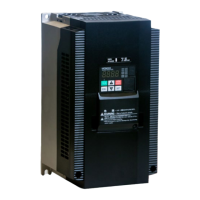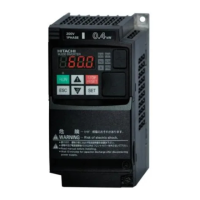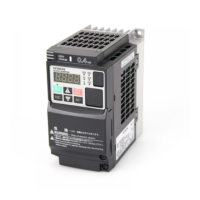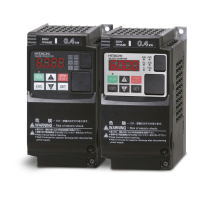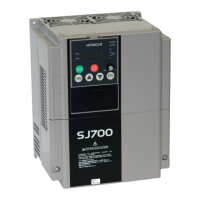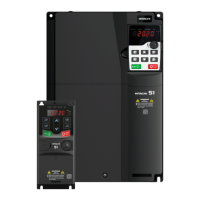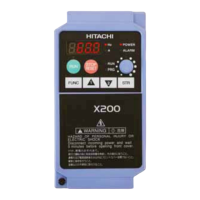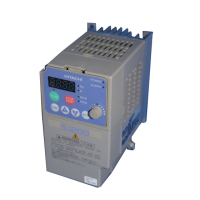Chapter 16 Maintenance and Inspection
16-2-6
16.2.7 Measurement Methods of I/O Voltage, Current, and Power
Typical instruments for measuring input/output voltage, current, and power are shown below.
Standard reference values
R-S, S-T, T-R
(E
R
), (E
S
), (E
T
)
Effective
value of full
waves
200 V class: 200 to 240 V 50/60 Hz
400 V class: 380 to 480 V 50/60 Hz
R, S, T currents
(I
R
), (I
S
), (I
T
)
Effective
value of full
waves
If there is unbalance in the input
supply
I
IN
= (I
R
+I
S
+I
T
) / 3
R-S, S-T, T-R
(W
I1
)+(W
I2
)+(W
I3
)
Electrodynamomete
r-type wattmeter
*1
Effective
value of full
waves
Calculated from the measured values of the input voltage (E
IN
),
power input current (I
IN
), and input power (W
IN
).
U-V, V-W, W-U
(E
U
), (E
V
), (E
W
)
See the figure below
or Rectifier-type
voltmeter
*1*2
Effective
value of
fundamental
wave
U, V, W currents
(I
U
), (I
V
), (I
W
)
Effective
value of full
waves
Electrodynamomete
r-type wattmeter
*1*2
Effective
value of full
waves
Two-wattmeter method
(Or three-wattmeter method)
Output
power
factor
P
fOUT
Calculated from the measured values of the output voltage
(E
OUT
), output current (I
OUT
), and output power (W
OUT
).
*1. Use instruments that show the effective value of the fundamental wave for the output voltage and the effective value
of full waves for the current and power.
*2. Since the inverter output waveform is controlled by PWM, it has a large margin of error, especially at low frequencies.
In many cases, general multimeters may be defective for the measurement, because of the adverse effects of the
noise.
Example method for measuring output voltage
Diode
600 V 0.1 A or more (200 V class)
1000 V 0.1 A or more (400 V class)
300 V (200 V class)
600 V (400 V class)
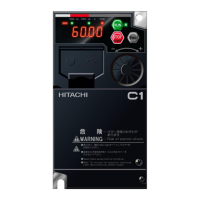
